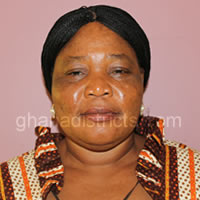Health Care
Even though success has been achieved in different aspects of the health sector, however this is inadequate especially for the poor and other disadvantaged groups in the district. The main objectives of the sector are geared towards enhancing efficiency in service delivery and increased access to health care services, ensuring financial arrangements that protect the poor and improving access to safe water in rural and peri-urban communities.
The health sector is however faced with challenges including issues of access to health care services, quality of service and issue of affordability. The issue of affordability especially for the poor brings to fore the urgent need to tackle the policy issues of the Municipal Health Insurance Scheme.
Healthcare facilities.
The District has four (4) Health Centers, one (1) Community Clinic, and four (4) Community Health Planning System (CHPS) Compounds which are all public health facilities.
Staff Distribution
Data on staffing as at 2017 the staff distribution in the health sector was as indicated in the table below;
Access and use of health care facilities
The Techiman North District is relatively more endowed in terms of health facilities. Using results from the Core Welfare Indicators Questionnaire Survey, 2003 about 69.4% of households in the District takes less than 30 minutes to reach the nearest health facility as compared to the regional average of 53.85 and 57.6% for the nation. Whereas 11.2% needed medical services only 9.5% of those sick or injured consulted a health practitioner or used medical services.
The level of satisfaction with medical services is 74% which is lower than the regional average of 82.3%. Most women (94.8%) aged 12-49 years who had live births received pre-natal care. Birth assisted by trained health professionals was 68%. The tables 1.22 below indicate the trend of Antenatal Care and outcomes of delivering in the District from 2016-2017.
Disease Trend
Malaria has been identified as the major causes of OPD attendance in the District. Table indicates the trend of top ten diseases in the District.
From the table, it is evident that malaria continues to be the leading cause of OPD attendance. This was followed by Upper Respiratory Tract Infection (URTI). It is worth noting that diarrhoea diseases appeared third on the District’s top ten morbidity chart. This may be an indication of inadequate access to potable water in most of the communities in the District. With the introduction of the new anti-malaria combination therapy and strengthening of the Home-Based Care component of the malaria control programme, as well as other environmental sanitation measures, it is hoped that there will be a decline in malaria cases. It is also important for the District to sustain the National Sanitation Day (NSD) to rid our environs the emergence of mosquitoes to reduce the incidence of malaria in the District.
The District would also need to take a serious look at strategies on non-communicable diseases. There is also the need to promote healthy lifestyle behaviours through the promotion of recreational activities and facilities.
From the Table above it shows clearly that there has been a reduction in cases of complicated malaria in the district. Analysis of the outpatients/ inpatients data in 2016 and 2017 shows clearly that even though lower OPD cases were reported (compared to 2009) there was a high in- patient malaria cases. This provides us with some hope that the RBM programme is gaining grounds as fewer cases of malaria are being recorded. This represents 14.8% of the total admissions as compared to 17.6% in 2016. For the first time, in 2017, HIV/AIDS featured in the top ten causes of admission. This indicates the rising trend of the HIV/AIDS pandemic in the municipality, which calls for urgent and appropriate response.
HIV/AIDS SITUATION
The strategic location of Techiman North District attracts a large number of out-migrants in the District. The nearness of the District to Techiman which is commercial centre contributes to the high rate of the HIV/AIDS in the district. Most of them migrate to Techiman to engage in commercial sex activity and other high risk behaviours.
These among others has resulted in the high prevalence rate of HIV/AIDS of 4.2% as compared to the regional rate of 4.7% and national rate of 1.9% as at the year 2009. Techiman has been identified as a high HIV prevalence area. A study conducted by the GAC in 2009 (PLACE) revealed that out of 1,180 people interviewed 54% men and 52% women reported having had two sexual partners in the past four weeks. Another 50.5% of the people socializing at the hotspots reported never used condoms.
High risk behaviour is therefore common, facilitating the spread of HIV. As can be seen from tables 1.17 and 1.18 HIV/AIDS featured for the first time as one of the top ten causes of admission and death in 2017. This indicates the growing trend of the pandemic in the District.
The District’s AIDS control measures have focused on the following areas;
• Prevention, Behaviour change communication
• Stigma Reduction
• Psychological counselling
• Nutrition and livelihood support for PLWHA a orphans
• Treatment(ART, STI, OI)
• Referral (VCT, STI, OI)
• Voluntary Counseling and Testing (VCT)
• Condom distribution
• Prevention of Mother to Child Transmission
The growing trend of the sexually transmitted diseases especially HIV/AIDS in the District calls for intensive and concerted effort to stem the disease from spreading further to the wider population. This calls for a shift from the general approach in the past, to targeting of people with high risk behaviours especially Female Sex Worker (both seaters and roamers), Male Sex Workers (MSW) and PLWHA. There is the need to coordinate the implementation of HIV/AIDS interventions and strengthen the synergies among implementing partners in the District for high impact and improved quality of service delivery.
Mutual Health Insurance Scheme
The objective of the Techiman Mutual Health Insurance Scheme is to offer affordable and quality healthcare services to its members. The Techiman North District is about establishing an autonomous Mutual Health Insurance Scheme. However, the inhabitants have registered with the Techiman Municipal Mutual Health Insurance Scheme which still operates in the District. The scheme started providing benefits to its registered clients in September, 2016. As at 2016, the scheme had 58,339 registered people, representing 30% of its target population. As a new District it is important that a separate Mutual Health Insurance Scheme autonomous of the Techiman Municipal Mutual Health Insurance is established. The District Assembly is in the process of acquiring an officer accommodation to facilitate the establishment of the Insurance Scheme in the District.
Date Created : 5/10/2019 8:54:42 AM






 facebook
facebook X (twitter)
X (twitter) Youtube
Youtube +233 593 831 280
+233 593 831 280 0800 430 430
0800 430 430 GPS: GE-231-4383
GPS: GE-231-4383 info@ghanadistricts.com
info@ghanadistricts.com Box GP1044, Accra, Ghana
Box GP1044, Accra, Ghana